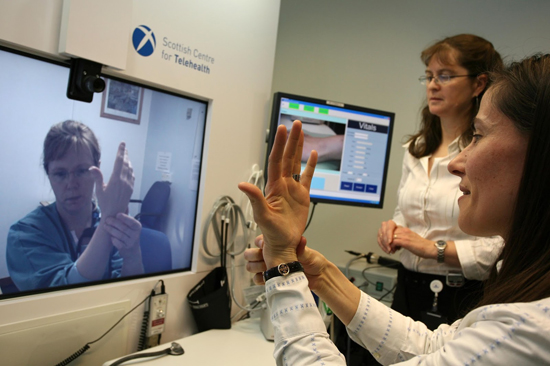Study: Virtual Visits Could Significantly Cut U.S. Health Care Costs

Reported by California Healthline
Virtual health care visits are associated with significantly lower costs than traditional in-office visits and could result in Medicare savings, according to a study released this month by the Alliance for Connected Care.
For the study, researchers collected data from five telehealth companies and compared the difference in costs for care provided in various sites, including virtual and in-office visits.
Overall, the study found that telehealth visits cost between $40 and $50 on average, compared with an average estimated cost of $136 to $176 for an in-office visit. As a result, the study estimates that each virtual visit could save an average of $126 per visit.
Henry DePhillips -- chief medical officer of Teladoc, a telehealth company that provided data for the study -- said that savings could be even higher for older patients.
The study also found that 83 percent of health conditions were resolved after a virtual visit. Of the patients whose conditions were not resolved, 10 percent went to an emergency department and about 50 percent had an in-office visit.
Meanwhile, among patients who used telehealth services:
- 45.8 percent would have gone to an urgent care facility if a virtual visit was not available
- 30.9 percent would have gone to a physician's office
- About 12 percent would have done nothing
- 5.6 percent would have gone to an ED
Implications for Medicare
The study noted that telehealth services covered by Medicare are reimbursed at the same rate as in-office care Therefore, under the assumption that Medicare pays $83 for both telehealth and in-office physician visits, Medicare could save on average of about $45 per virtual visit.
Recent moves by insurer Anthem show that telehealth is becoming more common among some stakeholders as the result of its potential savings. Specifically, Anthem announced that it will provide telehealth services to many of its Medicare Advantage beneficiaries beginning Jan. 1, 2015. Under the service, certain beneficiaries in 12 states will be able to access virtual visits without a copayment.